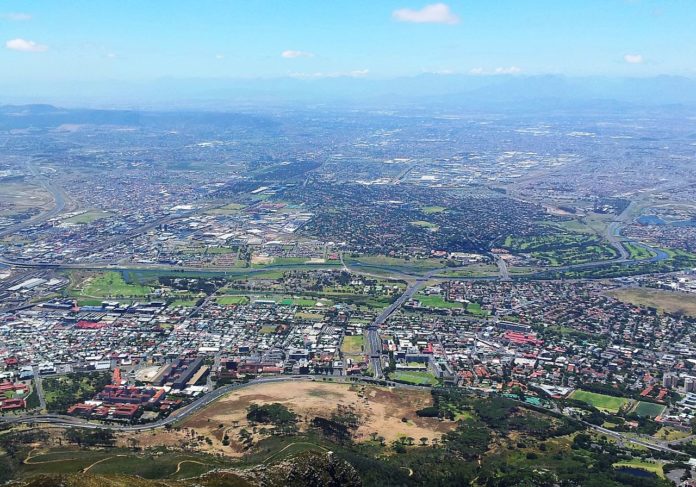In January 2022, the Goringhaicona Khoi Khoi Indigenous Traditional Council (GKKITC) and the Observatory Civic Association (OCA) were in court. They had sought an interdict against the proposed Liesbeek development. On March 20 – a day before Human Rights Day – the court announced their decision and granted the interdict. This meant the development that was currently taking place had to stop. The judge said that the developers had had inadequate consultation around the development of the land.
That’s where the main issue lies: the land and its environmental and cultural significance. The Liesbeek Leisure Property (LLP) Trust were (they are no longer able to at the moment due to interdict) developing 150 000 square metres of concrete at the River Club site. This land was being developed for use by Amazon for their African headquarters. However, the contestation arose because the GKKTIC and OCA are adamant that the land is indigenous land which was the “epicentre of Khoi wars of resistance against colonial conquest”.
The timeline starts in 2015 when the LLP (Pty Ltd) bought the deed for the land. In October of 2015, LLP sold the property to the Liesbeek Leisure Properties Trust (LLPT). There was then the move to get the rights for the redevelopment of the land. In 2017, the city of Cape Town allowed LLPT to make use of the land. This was following the public participation and other consultative process which took place in 2016.
The River Club property is private land owned by the trust. Before the construction and development of the land began in 2021, the private property comprised a golf driving range, restaurant, bar, conference centre and large tarmac parking lot. The trust had to apply for environmental authorisation from the Western Cape Government for the proposed redevelopment as well as submit a rezoning application to the City of Cape Town.
READ MORE:
Khoi activist: “Amazon is the 2021 version of the Dutch East India Company”
Nadine Dirks, campaign organiser with the Liesbeek Action Campaign told The Daily Vox that the campaign started in 2019 to oppose the development. It is made up of the GKKITC and the OCA. Dirks said the Khoi groups within the broader group against the development are in fact 22 different groups. There are several Khoi groups who are supporting the development. Dirks said she thinks on the development side, there are around five different groups.
During the consultation processes, the trust said they had consultations with the biodiversity, hydrology, socio economic, visual and heritage impacts of the project. However the interdict said that there was inadequate consultations with the Khoi groups and it was not done in an inclusive manner.
Dirks said the groups opposing the development along with environment groups and the OCA had several discussions in 2020 to stop the development. She said they also had meetings with the developers but that didn’t yield results. After going through several actions, they realised the courts were their last hope. That’s when they approached the courts for the interdict to stop the development which was granted.
READ MORE:
Liesbeek development: “This is a case of global importance”
At this point, on the LAC’s side, they are working on a high court review. This is the second stage of their legal action. From this action, they want the courts to rule that the developers must return the land to its original form. This high court review is likely to indicate whether the development needs to stop completely or whether the development can go ahead.
While the interdict was received as a great victory, Dirks acknowledged that it doesn’t mean that the development won’t take place at all. There is already an opposition to the interdict.
On March 28, the trust had already filed their leave to appeal. James Tannenberger, the spokesperson for the trust said in a statement that the court failed to consider the evidence properly. Tannenberger said by interdicting the LLPT from carrying out any construction work, the LLPT and the wider community would suffer severe and irreversible harm.
While the court actions and interdict were being heard, the development on the land was continuing. There are around 750 construction workers who were working on the site. As part of the interdict ruling, these 750 workers were told to go home. The trust has said the court erred in many of its rulings within the interdict and is asking for it to be recalled.
RELATED:
The River Club redevelopment will create both jobs and a beautiful environmentally safe space
In the court papers for the leave to appeal, the trust said if the interdict stands, this will mean crippling financial liabilities which the LLPT will suffer making it all but certain that the development as planned and approved will not go ahead. In term, the court papers mention that this will endanger transmission of their cultural legacy for the First Nations Collective.
However, for the GKKITC, Dirks said if they succeed, it will help to change the way indigenous people see themselves in South Africa. She said for the longest time indigenous people have seen themselves as disenfranchised because of the way the society is structured.
“It empowers us to start having conversations around whose land this is and who should be given first priority […],” said Dirks.
Read more:
The Amazon Development might bring jobs while carting away biodiversity









